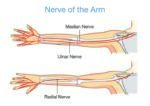Formation continue pour les professionnels de la thérapie manuelle : avantages, exigences et ressources
Classé sous Non classé
Qu'est-ce que la formation continue en thérapie de la main ?
Définition et portée
La formation continue en rééducation de la main comprend des activités d'apprentissage structurées conçues pour aider les professionnels à se tenir au courant des avancées en rééducation, en techniques chirurgicales et en soins fondés sur des données probantes. Ces possibilités comprennent des ateliers, des cours en ligne, des programmes universitaires et des certifications spécialisées qui améliorent les résultats pour les patients et garantissent le respect des exigences d'agrément.
Pourquoi c'est important dans les professions de thérapie de la main
Le domaine de la rééducation de la main progresse constamment grâce à de nouvelles techniques de rééducation, interventions chirurgicales et protocoles de traitement. Les avancées en orthopédie, en neurologie et en technologies d'assistance transforment chaque année la façon dont les thérapeutes abordent la guérison. Sans formation continue, les professionnels de la rééducation de la main risquent de prendre du retard, limitant ainsi leur capacité à prodiguer des soins optimaux aux patients.

Importance de l'apprentissage continu en thérapie de la main
Améliorer les compétences cliniques
Les thérapeutes de la main accompagnent les patients en convalescence après des fractures, des lésions tendineuses, de l'arthrite et des lésions nerveuses. Leur formation continue leur permet d'appliquer les stratégies thérapeutiques les plus récentes, des techniques avancées d'attelles à la rééducation fonctionnelle.
S'adapter aux nouveaux protocoles de réadaptation
Les nouvelles directives cliniques et méthodes chirurgicales obligent les thérapeutes à adapter leurs protocoles de réadaptation. Grâce à la formation continue, les professionnels peuvent rapidement intégrer ces mises à jour à leur pratique.
Renforcer la crédibilité professionnelle
Des certifications spécialisées et des formations actualisées renforcent la confiance entre patients, chirurgiens et équipes soignantes. Un thérapeute engagé dans son développement professionnel est souvent plus respecté en milieu clinique et universitaire.
Exigences en matière de licences et de certifications
CEU et réglementations de l'État
La plupart des États exigent un nombre minimum d'unités de formation continue (UFC) pour conserver leur licence d'ergothérapie ou de physiothérapie. Les professionnels de la thérapie manuelle doivent s'assurer que les formations qu'ils choisissent sont approuvées par leur conseil d'État.
Dates limites de renouvellement pour le CHT (thérapeute de la main certifié)
Le Commission de certification des thérapies de la main (HTCC) exige que les thérapeutes de la main certifiés (CHT) se recertifient tous les cinq ansCela implique de réaliser des activités de développement professionnel, notamment des CEU, des heures de pratique clinique et des contributions au domaine.
Implications éthiques de la conformité
Ne pas obtenir les CEU requises peut entraîner l'expiration des qualifications, la suspension de l'autorisation d'exercer ou une perte de crédibilité auprès des patients et de leurs pairs. D'un point de vue éthique, les thérapeutes ont la responsabilité de maintenir leurs compétences et de fournir des soins actualisés.
Types de formation continue pour les thérapeutes de la main
Ateliers et laboratoires pratiques
Les ateliers pratiques permettent aux thérapeutes d’affiner en temps réel les techniques de thérapie manuelle, la fabrication d’attelles et les stratégies de rééducation postopératoire.
Cours en ligne et webinaires
Les programmes virtuels offrent une certaine flexibilité, permettant aux thérapeutes de gagner des CEU depuis chez soi. Beaucoup abordent des sujets tels que l’ergonomie, la réparation des tendons ou la prescription d’exercices avancés.
Conférences et symposiums
Des événements annuels tels que le Réunion annuelle de l'ASHT réunir des experts mondiaux pour partager de nouvelles recherches, des pratiques cliniques et des opportunités de réseautage.
Programmes d'extension et de spécialité universitaires
Les universités proposent souvent des programmes d’extension conçus pour une formation avancée en réadaptation, alliant science clinique et pratiques fondées sur la recherche.
Domaines de formation spécialisés en thérapie de la main
Rééducation post-chirurgicale
Les progrès des techniques chirurgicales de réparation des tendons et des ligaments nécessitent que les thérapeutes restent informés des délais de rééducation et des protocoles de mobilisation progressive.
Lésions nerveuses et affections neurologiques
Les CEU dans ce domaine couvrent la rééducation après des lésions nerveuses périphériques, des affections du plexus brachial et des dysfonctionnements de la main après un AVC.
Thérapie de la main pédiatrique
Les enfants présentent des défis uniques en matière de rééducation de la main. La formation continue permet d'approfondir les connaissances sur les attelles pédiatriques, les étapes du développement et les approches thérapeutiques stimulantes.
Ergonomie et prévention des accidents du travail
Avec l’augmentation des cas de lésions dues aux efforts répétitifs (RSI), les formations continues en ergonomie aident les thérapeutes à guider les interventions sur le lieu de travail, à prévenir les blessures et à favoriser le rétablissement.
Avantages de la formation continue pour les professionnels de la thérapie de la main
Perfectionnement des connaissances et des compétences manuelles
Chaque cours enrichit la boîte à outils du thérapeute, des méthodes de thérapie manuelle mises à jour aux innovations dans la conception d'attelles et la rééducation fonctionnelle.
Accroître la confiance et la satisfaction des patients
Les patients se sentent plus en confiance lorsque leur thérapeute est formé aux dernières pratiques fondées sur des données probantes, ce qui améliore la confiance et les résultats du traitement.
Opportunités d'avancement de carrière
Les thérapeutes possédant des certifications avancées, telles que CHT, ont accès à des rôles de leadership, à des opportunités d'enseignement et à des postes spécialisés dans les hôpitaux ou les centres de recherche.
Réseautage avec des équipes multidisciplinaires
Les ateliers et les conférences offrent des occasions de collaborer avec des chirurgiens, des ergothérapeutes, des physiothérapeutes et des chercheurs.
Les défis de la formation continue des thérapeutes de la main
Gestion du temps
Concilier les charges de travail cliniques et la formation professionnelle peut être exigeant. Les formats en ligne contribuent à alléger ce défi.
Obstacles financiers
Les programmes de formation continue (CEU) peuvent aller de webinaires abordables à des conférences coûteuses de plusieurs jours. Certains employeurs et associations professionnelles proposent des aides financières.
Trouver des programmes accrédités
Tous les programmes de formation continue ne sont pas accrédités. Il est essentiel de vérifier l'accréditation auprès des organismes d'État et du HTCC pour garantir que les crédits sont pris en compte pour la recertification.
Meilleures pratiques en matière de formation continue en thérapie de la main
Créer des objectifs de développement professionnel
Se fixer des objectifs d'apprentissage annuels aide les thérapeutes à rester organisés. Par exemple, se concentrer sur les soins postopératoires une année et sur l'ergonomie l'année suivante assure une progression équilibrée.
Équilibrer le travail clinique et l'apprentissage
La planification stratégique des activités de formation continue pendant les périodes de faible charge de travail permet d’éviter l’épuisement professionnel et de maintenir la qualité des soins aux patients.
Choisir des programmes fondés sur des données probantes
Les programmes soutenus par des recherches évaluées par des pairs et des organisations professionnelles garantissent que les thérapeutes apprennent des pratiques conformes aux normes médicales actuelles.
Meilleures ressources pour la formation continue en thérapie de la main
ASHT (Société américaine des thérapeutes de la main)
L'ASHT propose des ateliers, des webinaires et sa réunion annuelle, tous conçus pour faire progresser la profession de thérapie de la main.
HTCC (Commission de certification des thérapies de la main)
Le HTCC fournit des ressources pour la recertification, le développement professionnel et le maintien du prestigieux Thérapeute de la main certifié (CHT) justificatif d'identité.
Plateformes d'apprentissage en ligne et universités
Des sites Web tels que Académie de thérapie de la main et les programmes d'extension universitaire offrent des cours flexibles et accrédités spécifiquement destinés aux professionnels de la thérapie de la main.
FAQ sur la formation continue en thérapie de la main
Q1 : À quelle fréquence les thérapeutes de la main certifiés doivent-ils se recertifier ?
Tous les cinq ans, par le biais d'heures de formation continue et de pratique clinique reconnues par le HTCC.
Q2 : Puis-je compléter mes CEU en ligne ?
Oui, de nombreuses formations de formation continue (CEU) sont disponibles en ligne, même si certaines compétences pratiques peuvent nécessiter des ateliers en personne.
Q3 : Quels sujets sont les plus précieux pour les CEU en thérapie de la main ?
Les soins post-chirurgicaux, la rééducation nerveuse, l’ergonomie, la thérapie pédiatrique et la fabrication d’attelles sont parmi les plus demandés.
Q4 : Les CEU sont-ils requis pour les ergothérapeutes et les physiothérapeutes spécialisés en thérapie de la main ?
Oui. Les ergothérapeutes et les physiothérapeutes spécialisés en thérapie de la main doivent satisfaire aux exigences de formation continue (CEU) pour obtenir leur licence et leur certification.
Q5 : Les employeurs couvrent-ils les frais de formation continue ?
Certains employeurs offrent un remboursement total ou partiel, notamment dans les hôpitaux ou les centres de réadaptation.
Q6 : Que se passe-t-il si je ne termine pas mes CEU à temps ?
Le non-respect des exigences en matière de CEU ou de recertification peut entraîner la suspension de la licence ou la perte du statut CHT.
Conclusion : Investir dans la croissance tout au long de la vie
La formation continue pour les professionnels de la rééducation de la main est plus qu'une exigence : c'est un engagement envers l'excellence. En se tenant informés des dernières stratégies de rééducation, les thérapeutes améliorent les résultats pour leurs patients, renforcent leur réputation et font progresser leur carrière.
Chaque unité de formation continue (UFC) obtenue témoigne non seulement de votre adhésion au traitement, mais aussi de votre engagement à aider les patients à retrouver leur fonction et leur autonomie. Dans un domaine où de petites améliorations peuvent changer une vie, la formation continue n'est pas facultative, elle est essentielle.
Plus à lire
EDS 101: Understanding Hypermobility in the Hand Therapy Setting
EDS in the Hand Therapy Setting General Overview:Ehlers Danlos Syndrome (EDS) is a group of heritable connective tissue disorders caused bygenetic changes that affect collagen production, the protein responsible for strength and elasticityin skin, ligaments and tendons (The Ehlers Danlos Society, 2016). There are thirteen forms of EDS that each have their own set of…
En savoir plusDifférencier le piégeage du nerf médian proximal du syndrome du canal carpien
Par : Brittany Day Piégeage du nerf médian proximal, syndrome pronateur ou syndrome de Lacertus ? Le syndrome pronateur est un terme utilisé pour décrire le piégeage du nerf médian proximal (PMNE) dans l'avant-bras. Le syndrome du pronateur et le syndrome de Lacertus sont parfois utilisés de manière interchangeable pour décrire le piégeage du nerf médian proximal, distal par rapport au ligament de Struthers et proximal par rapport au fléchisseur superficiel…
En savoir plusQu'est-ce que le syndrome des loges à l'effort chronique ? Présentation et suggestions de thérapies manuelles
Le syndrome des loges est une affection caractérisée par une augmentation de la pression dans un compartiment du corps, entraînant douleur, gonflement et diminution de la perfusion tissulaire (Barkay et al., 2021 ; Buerba et al., 2019). Il peut être aigu ou chronique (Barkay et al., 2021). Le syndrome des loges à l'effort chronique (SEC) est une forme rare, le plus souvent observée chez…
En savoir plusTraitement sensoriel chez les personnes atteintes ou non de tendinopathie
Emilee Sanders, OTS Traitement sensoriel chez les personnes avec et sans tendinopathie : une revue systématique avec méta-analyse des sites locaux, régionaux et distants dans les affections des membres supérieurs et inférieurs Rio, E, Sandler, J., Cheng, K., Moseley, GL, Cook, J., & Girdwood, M. (2021) Traitement sensoriel chez les personnes avec et sans tendinopathie : une revue systématique avec méta-analyse…
En savoir plusInscrivez-vous pour recevoir des mises à jour directement dans votre boîte de réception !
Inscrivez-vous avec nous et nous vous enverrons régulièrement des articles de blog sur tout ce qui concerne la thérapie des mains, des notifications chaque fois que nous mettons en ligne de nouvelles vidéos et tutoriels, ainsi que des documents, des protocoles et d'autres informations utiles.






